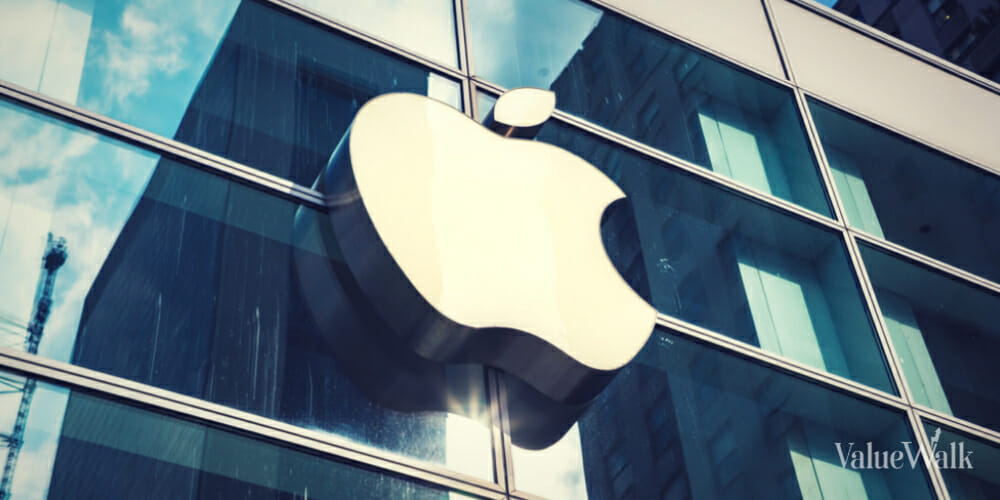Can this giant continue to grow?

It seems like just yesterday Apple (NASDAQ:AAPL) was in the headlines for reaching $2 trillion in market capitalization. Currently valued at a whopping $3 trillion, Apple has certainly achieved “Magnificent Seven” membership, but that raises questions about what it can achieve in 2024.
Apple’s market cap hit $3 trillion in August, so this time around investors may be wondering if it’s too inflated to be sustainable. But while Apple clearly has challenges to face in the coming year, it’s always possible that the stock continues to climb the so-called “wall of worry.”
It’s about value, not evaluation.
If you try to apply traditional valuation metrics to Apple, it’s very difficult to build a convincing bullish argument. For example, Apple’s GAAP 12-month price-to-earnings (P/E) ratio is 31.55, while its sector average P/E ratio is 25.84.
Looking at it from another angle, Apple stock is up nearly 50% year to date, which is unusual and may make value-focused investors uncomfortable. However, Apple’s growth as a company may justify its valuation.
In other words, Apple’s value comes from delivering consistently high sales, not traditional metrics. For example, in Apple’s fiscal fourth quarter, it generated $89.5 billion in revenue, including $43.8 billion from iPhone sales. Moreover, Apple achieved impressive quarterly services revenue of $22.3 billion. This is a 16% increase from the previous year and exceeds analysts’ consensus estimate of $21.4 billion.
On the other hand, Apple CEO Tim Cook warned of an ‘uneven macroeconomic environment’, citing the US’ long-term interest rate policy and China’s uneven recovery from COVID-19. It also has to deal with personal computer (PC) sales, which are not Apple’s main source of revenue but are still weak. Surprisingly, in Apple’s most recently reported quarter, Mac sales fell 34% to $7.6 billion.
Like every other company, Apple will have hurdles to overcome in 2024. But as long as American consumers are strong, Apple can succeed. Black Friday and Cyber Monday sales broke records in the United States this year. This indicates that people are willing and able to “shop until they drop” despite inflationary pressures.
Going forward, investors should keep in mind that smartphone sales are Apple’s bread and butter. A recovery in the PC market would certainly benefit Apple, but it wouldn’t necessarily be necessary to maintain its $3 trillion market capitalization. Therefore, investors should keep an eye on Apple’s iPhone sales updates. Because this could foreshadow the future trajectory of Apple stock.
Focusing on China and India
In Apple’s most recently reported quarter, China-based revenue fell 2.5% year-over-year to $15.1 billion. This is another sign that Apple’s biggest challenge isn’t the American consumer.
What U.S.-based investors should keep in mind is that Apple faces fierce competition from Huawei in China. Americans probably don’t think much about Huawei. However, the company has a huge presence in China’s technology equipment market.
Moreover, this is not Apple’s only challenge in China. The company also relies heavily on Chinese suppliers for product components. This is not a comfortable scenario at a time of heightened tensions between the U.S. and Chinese governments.
This does not mean that Apple relies entirely on China for component production. Among the company’s most important suppliers and assemblers is a Taiwanese company officially known as Hon Hai Precision Industry Co. (most Americans call it Foxconn).
Not to place too much importance on Foxconn, but the fact that Foxconn recently reported solid sales is certainly a positive sign for Apple. Notably, the Taiwanese company’s November sales rose 18% to $20.6 billion.
Moreover, Apple appears to be preparing to shift its focus away from China. According to Apple Insider, the company has “asked its battery suppliers to scale up production in India in line with iPhone 16 manufacturing.”
It’s highly unlikely that Apple will ever completely move away from China as a supplier. Nonetheless, a pivot to India could help avoid tensions and problems in China.
“If all goes well with iPhone 16 battery supply, Apple plans to shift more iPhone battery production to India,” a source told Apple Insider.
Target of $4 trillion by 2024
Increasing Apple’s market capitalization to $4 trillion and its stock price above $250 or $300 by 2024 will not be easy. But if 2023 has taught the market anything, it’s that big tech companies can only keep getting bigger.
So investors shouldn’t lose faith in Apple stock’s valuation in December, even if it looks high. Despite ongoing problems, Apple has not lost its relentless drive to find solutions, overcome obstacles, and sell massive amounts of smartphones.



